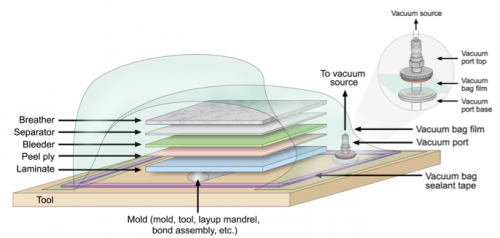An introduction to essential terminology and ways of using causal graphs to represent causal systems. Learn about Open & Free OLI courses by visiting the “Open & Free features” tab below.
Graphical Causal Models — Open & Free
- Description
- Open & Free features
- What students will learn
- Learning objectives by module
- Course assessments, activities, and outline
- Other course details
- System requirements
Description
In making the causal graph modules, we’ve taken a very spare approach and cover only the essential ideas in terminology on causal graphs. They include the basic concepts of causal graphs as a way to represent causal systems, but they don’t go into nuance or extended case studies.
In the modules, we present graph theoretic ideas of directed paths, undirected paths, and treks. We go all the way through D- Separation, which is a fundamental notion developed by Judea Pearl and colleagues in the late 1980s. We present the key ideas in just a 2- to 4-minute video followed immediately by several Learn By Doing exercises to see if you’ve got the ideas presented in the video. The activities contain feedback and may include several layers of hints to help you if you get confused. The entire unit through Bayes Nets should take no more than three hours.
We hope you enjoy the material, and we are confident that learning this content will help with any more extensive investigations into graphical causal models.
Open & Free features
Open & Free Courses
- Open & Free OLI courses enable independent learners to study a subject on their own terms, at their leisure. Courses are:
- Self-guided.
- Self-paced.
- Self-supported.
- Open & Free courses include only the learning materials:
- No teacher.
- No tests.
- No college credit.
- No certificate of completion.
- *If your teacher gave you a Course Key, do not use an Open & Free course because your teacher will never see your work.
What students will learn
By the time they finish this course, students will learn or be able to:
- Represent direct causes and effects via causal graphs.
- Represent direct and indirect causation with causal graphs.
- Represent common causes and effects with causal graphs.
- Represent feedback with causal graph
- Identify the effects of hard and soft interventions on causal graphs
- Represent and compute undirected paths.
- Recognize colliders and the number of them in a path.
- Recognize Treks
- Categorize nodes on a path as active / inactive
- Categorize paths as active / inactive
- Categorize d-separation / d-connection for any X, Y | { Z } in a causal graph.
- Connect Conditional Probability Table (CPT) Structure to a Graph.
- Encode parametric form into Conditional Probability Table (CPT).
Learning objectives by module
UNIT 2: Graphical Causal Models
Module 2: Graphical Causal Models: Basics
- Represent direct causes and effects via causal graphs
- Represent direct and indirect causation with causal graphs
- Represent common causes and effects with causal graphs
- Represent feedback with causal graph
- Identify the effects of hard and soft interventions on causal graphs
Module 3: Graphical Causal Models: Undirected Paths, Treks, and D-Separation
- Represent and compute undirected paths.
- Recognize colliders and the number of them in a path.
- Recognize Treks
- Categorize nodes on a path as active / inactive
- Categorize paths as active / inactive
- Categorize d-separation / d-connection for any X, Y | { Z } in a causal graph
Module 4: Bayes Nets
- Connect Conditional Probability Table (CPT) Structure to a Graph
- Encode parametric form into Conditional Probability Table (CPT)
Course assessments, activities, and outline
UNIT 1: Introduction to Center for Causal Discovery Modules
Module 1: Introduction and Acknowledgements
UNIT 2: Graphical Causal Models
Module 2: Graphical Causal Models: Basics
Module 3: Graphical Causal Models: Undirected Paths, Treks, and D-Separation
Module 4: Bayes Nets
UNIT 3: Appendix
Module 5: Appendix
Other course details
System requirements
OLI system requirements, regardless of course:
- internet access
- an operating system that supports the latest browser update
- the latest browser update (Chrome recommended; Firefox, Safari supported; Edge and Internet Explorer are supported but not recommended)
- pop-ups enabled
- cookies enabled
Some courses include exercises with exceptions to these requirements, such as technology that cannot be used on mobile devices.
This course’s system requirements:
- None listed (subject to change)







